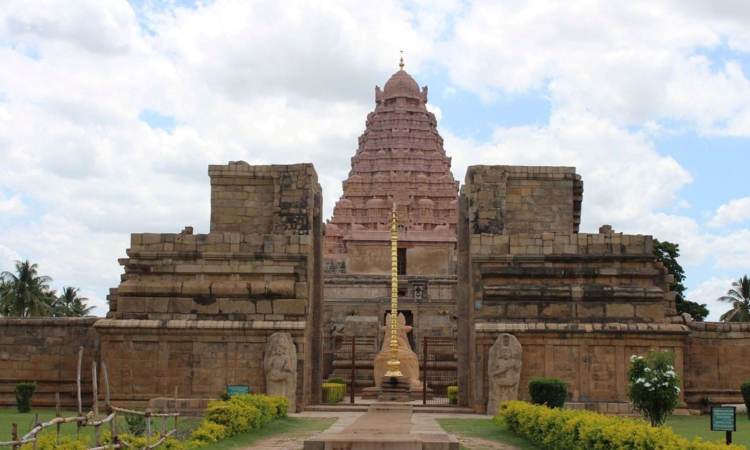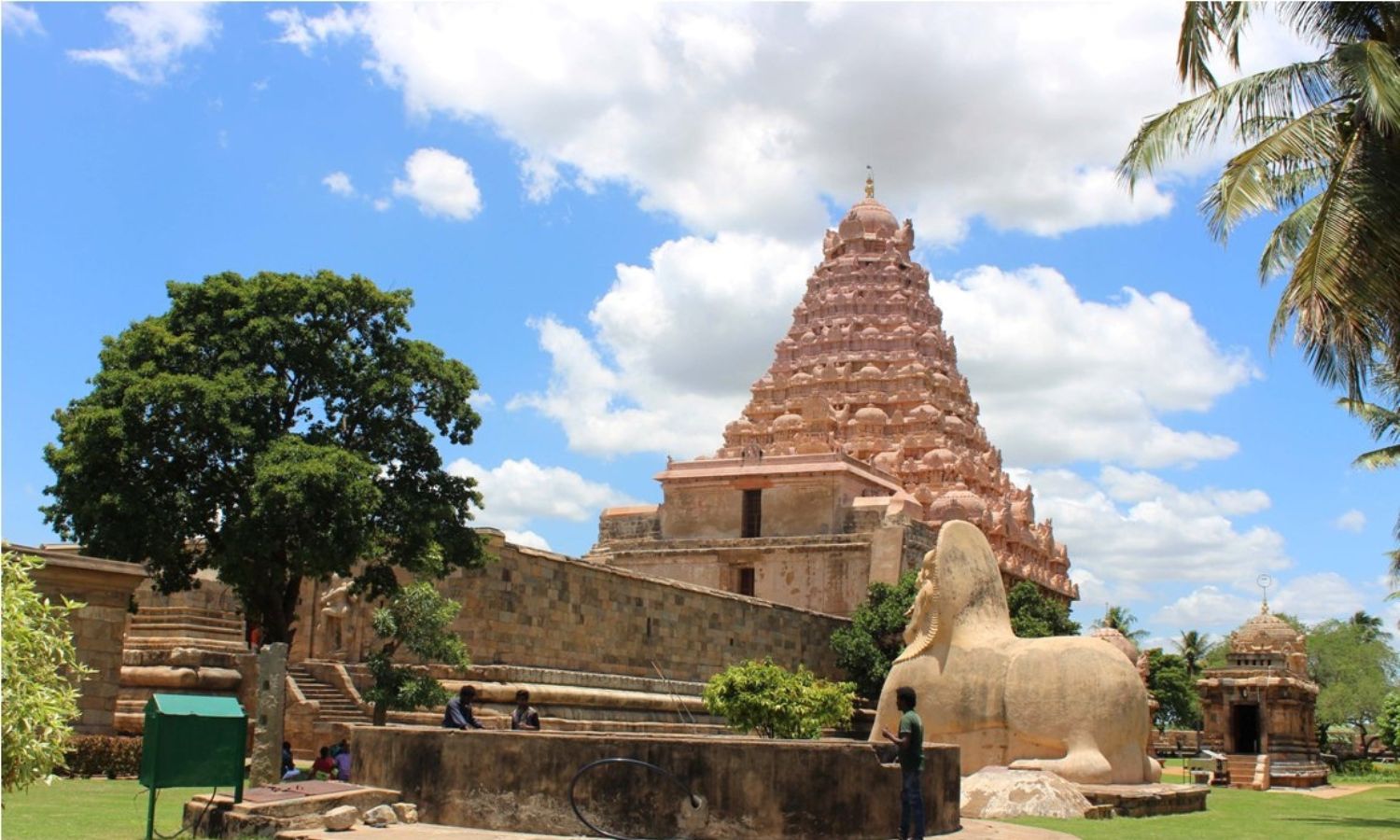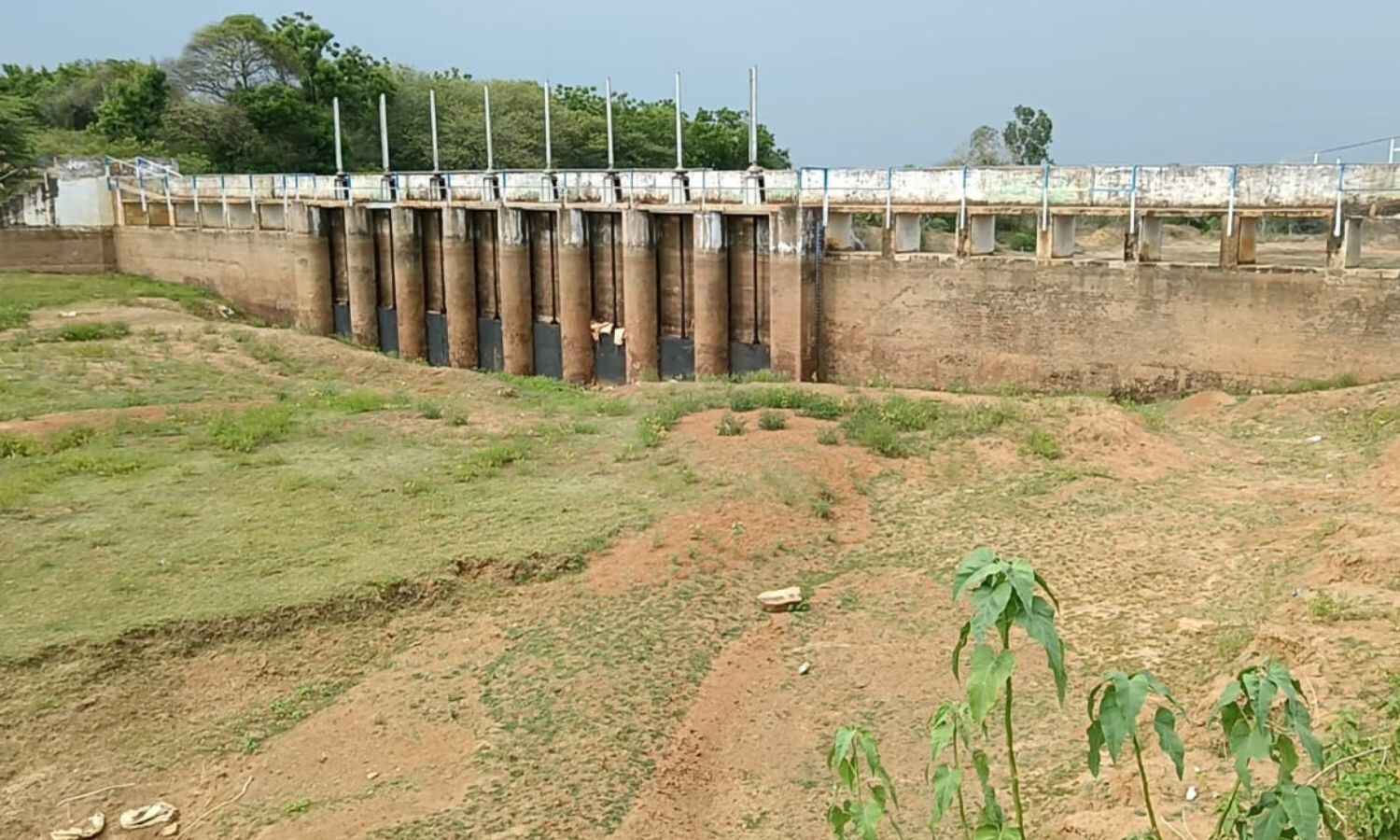Rajendra Cholan -- Fierce warrior and most humane emperor
The ruler, who assumed the title of Gangaikonda Cholan and built the city Gangaikonda Cholapuram, ensured that his regime flourished in other aspects as well, particularly Tamil literature, art and architecture. His reign was also acclaimed as the golden age of the Chola dynasty

Brahadeeshwarar temple at Gangaikonda Cholapuram
TIRUCHY: Rajendra Cholan I, the greatest warrior of the Chola dynasty, expanded his empire to the banks of the Ganga in North India and across the Indian Ocean to the West and South East Asia, making it one of the most powerful maritime empires of India.
At the same time, he was humane to his subjects and maximised their satisfaction and safety with his administrative strategy. His key role in water management was the best he offered during his regime.
Rajendra Cholan began his warfare as a co-regent for his father in an expedition in 1012, which resulted in the capture of Aduthurai in modern-day central Tamil Nadu and Vanavasi in western Tamil Nadu.
He then shifted his attention to Kollipaakkai, in northern Andhra Pradesh, and captured it in 1013. As there were wars continuously, the Chola dynasty could conquer the Chera and Pandya kingdoms and took the entire present Tamil Nadu under their control.
In 1016, Rajendra Cholan after taking ove the throne, captured the South Asian countries India, Sri Lanka, Maldives, Lakshadweep, Andaman and Nicobar Islands and Southeast Asia presently Bangladesh, Myanmar, Thailand, Cambodia, Vietnam, Malaysia, Singapore, Indonesia.
This proved that the Rajendra Cholan was one of the most powerful maritime empires of India, and its naval base was functioning from Poompuhar.
He recognised the importance of a strong navy for trade and military success. He strengthened the Chola navy, allowing him to project Chola power overseas and maintain control of trade routes.
As victory was certain in every war due to his expertise, Rajendra Cholan enjoyed every invasion he led. Subsequently, Rajendra Cholan conquered the territories of Srivijaya in the Malay Peninsula, Southern Thailand, Sumatra and Java in South East Asia.
The Cholas exacted tribute from Thailand and the Khmer kingdom of Cambodia and even collected taxes from them. He defeated Mahipala, the Pala king of Gauda in present-day Bengal and Bihar, and to commemorate his victory, he assumed the title of ‘Gangaikonda Cholan’ as he conquered the kingdoms near Gangai and to commemorate the victory of 1019, he created a capital city in 2023 and named his new capital city as Gangaikonda Cholapuram, and this is presently recognised as a World Heritage Site by UNESCO.
Rajendra Cholan created this new city on the other side of Pancha Rivers – Cauvery, Kudamurutti, Vettar, Vennar and Palar to avoid troubles while moving the soldiers to the battlefield.
Rajendra Cholan preferred to live in the new city along with the soldiers and stood as a human fortress for the Chola dynasty.
Despite being a warrior, Rajendar Cholan was very particular about the welfare of the people.
“The region was a rain-fed barren land during the times of Rajendra Cholan, and so he built the new capital Gangaikonda Cholapuram and made several smaller cities like Jayankondam Cholapuram, Meensurutti, T-Pazhur and Ponparappi for the use of his people,” said Professor Thiagarajan in his book ‘History of Ariyalur’.
Rajendra Cholan was very kind to his people and gave them all the facilities required.
Since he was very busy with wars all the time, he ordered to take care of the aged persons, women and children and he took the men along with him.
“These women took care of agriculture, and they used elephants for ploughing the grounds. When there was no war, Rajendra Cholan utilised the men in digging tanks and canals and also constructed temples for the people, and thus he could create Ponneri, otherwise called Cholagangam, in which he poured water from the river Ganga.
Later, he constructed the Brahadeeshwarar temple on par with the Big Temple constructed by his father Raja Raja Cholan and consecrated the temple with the holy water from the Ganges carried by the kings whom he defeated,” the ‘History of Ariyalur’ states.
Rajendra Cholan was noted for his administrative reforms and governance and followed the traditional local approach to self-government. He formed the revenue villages with 30 wards each, and an election was conducted to elect representatives for the village council.
Being very compassionate, humane and devoted to the Tamil language, Rajendra Cholan’s regime flourished in several aspects, particularly Tamil literature, art and architecture, which was acclaimed as the golden age.





